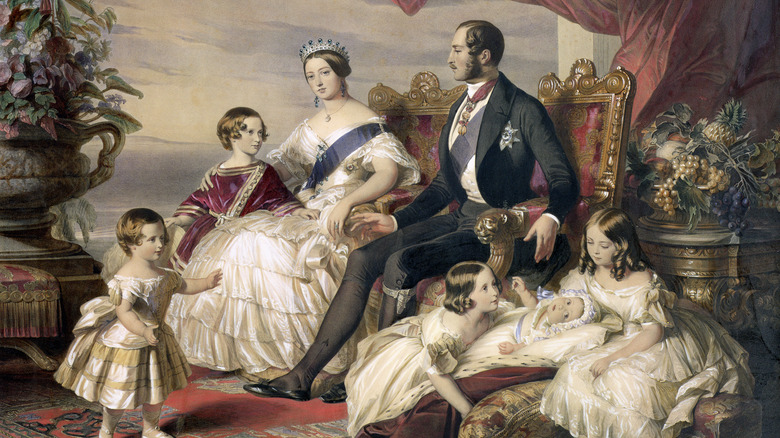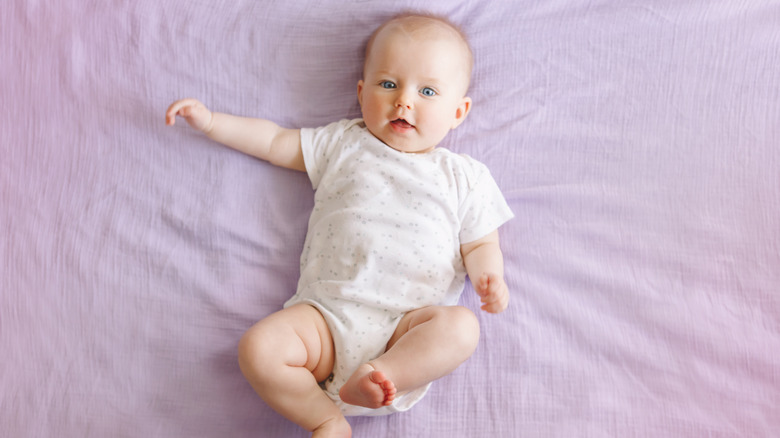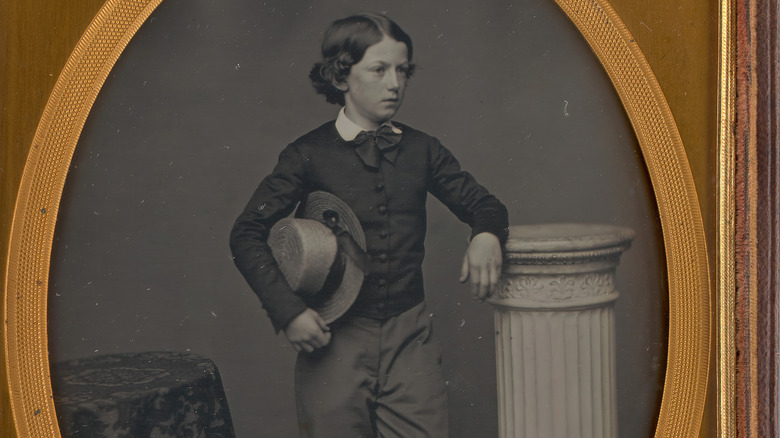The Real Reason Boys Wore Dresses In Victorian Times
These days, the idea of dressing children in clothes that aren't marketed towards a specific gender is becoming a thing, as HuffPost points out. Of course, a generation ago, baby girls were all about pink, baby boys were all about blue, and as each gender aged out of infancy, their parents continued to dress them in "boy clothes" and "girl clothes," as Britannica notes.
Perhaps surprisingly, as recently as 130 or so years ago, parents paid little to no attention to their children's gender — at least, in infancy and up until about age seven or eight. In looking at paintings and photos from the Victorian era, it can be hard to tell the boys from the girls, since parents would put little boys in dresses just as often as they did for little girls. However, this was not done out of forward-thinking attitudes about gender roles, according to The Vintage News. Rather, it was done for a variety of practical reasons.
From dresses to the onesie
Whether a child was born in a middle-class American home in 2022, or a Victorian manor in 1882, one fundamental truth of parenting was and is the same for both children: When you're raising a baby, ready access to the stinky bits is a top priority. Changing a diaper must be done as soon as possible after it's soiled, lest the tot develops a rash. The procedure must also be done quickly, as babies are not going to hold still for long. Further still, when it's time for potty training, having to fuss about with snaps and zippers and such just won't do.
For these reasons and others, the children's clothing industry has developed clothes that can be removed quickly, or can be moved aside to access the parts that need attention. However, until about a century ago, this wasn't a thing. Parents instead put their children — boys and girls — in dresses. It made diaper changing easier, it made potty training easier, and they left room for growing bodies, according to Babyology.
There were, however, some minor differences between boys' dresses and girls' dresses. Boy's dresses were often in darker colors or had features — such as an opening down the front — that wouldn't appear on the girls' dresses.
What is Breeching?
Your grandmother or great-grandmother may have warned you, back in the day, that you were getting "too big for your britches." The word "britches" is a colloquialism that came from the word "breeches," which is what we in the 21st century would describe as trousers or pants.
In the days when infant and toddler boys wore dresses, they of course didn't wear them into adulthood. According to The Herald Bulletin, a young lad would usually start wearing pants when he was bundled off to school and presumably was old enough to manipulate the buttons, straps, and zippers on the garments. In a far more uncomfortable reality: when he was old enough to go to work.
For boys in families with the time, money, and wherewithal to make a thing about it, a boy transitioning into pants was something of a special occasion, according to Babyology. The process was called "breeching" and, in some cases, the young lad would mark the occasion by being gifted a toy sword.


